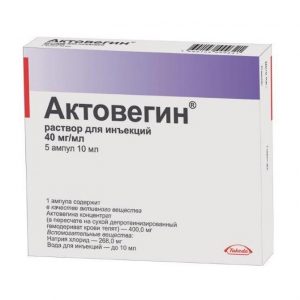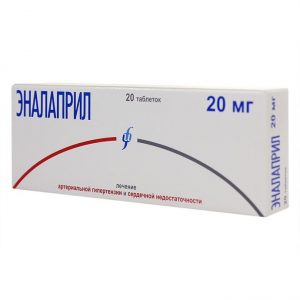Description
Latin name
Hypothiazid
release form
tablets
Packaging
20 pcs.
Pharmacological action
Hypothiazide – diuretic.
Pharmacodynamics
The primary mechanism of action of thiazide diuretics is to increase diuresis by blocking the reabsorption of sodium and chlorine ions at the beginning of the renal tubules. In doing so, they increase the excretion of sodium and chlorine and, therefore, water. Excretion of other electrolytes, namely potassium and magnesium, also increases.
At maximum therapeutic doses, the natriuretic / diuretic effect of all thiazides is approximately the same. Natriuresis and diuresis occur within 2 hours and reach their maximum after about 4 hours. They also reduce the activity of carbonic anhydrase by increasing the excretion of the bicarbonate ion, but this effect is usually weak and does not affect the pH of the urine. Hydrochlorothiazide also has antihypertensive properties. Thiazide diuretics have no effect on normal blood pressure.
Pharmacokinetics
Hydrochlorothiazide is incomplete, but is rapidly absorbed from the digestive tract. This effect persists for 6 12 hours. After an oral dose of 100 mg Cmax in plasma is reached after 1.5 2.5 hours.
At the maximum diuretic activity (approximately 4 hours after administration), the concentration of hydrochlorothiazide in the blood plasma is 2 μg / ml. Plasma protein binding is 40%. It is excreted mainly through the kidneys (filtration and secretion) in an unchanged form. T1 / 2 for patients with normal renal function is 6.4 hours, for patients with moderate renal failure – 11.5 hours, and for patients with creatinine Cl less than 30 ml / min – 20.7 hours.
Hydrochlorothiazide crosses the placental barrier and excreted in breast milk.
Indications
arterial hypertension (used both in monotherapy and in combination with other antihypertensive agents)
edematous syndrome of various origins (chronic heart failure, nephrotic syndrome, premenstrual syndrome, acute glomerulonephritis, chronic renal hypertension, chronic renal hypertension, chronic renal insufficiency, portile
control of polyuria, mainly with nephrogenic diabetes insipidus
prophylaxis of the formation of stones in the genitourinary tract in predisposed ny patients (decrease in hypercalciuria).
Contraindications
hypersensitivity to the drug or to other sulfonamides
anuria
severe renal (Cl creatinine – less than 30 ml / min) or hepatic insufficiency
difficult to control diabetes mellitus hypertension 3 (solid dosage form).
Use with caution in case of hypokalemia, hyponatremia, hypercalcemia, in patients with coronary heart disease, with cirrhosis, gout, in the elderly, in patients suffering from lactose intolerance, while taking cardiac glycosides.
Use during pregnancy and lactation
Hydrochlorothiazide crosses the placental barrier. The use of the drug in the first trimester of pregnancy is contraindicated. In the II and III trimesters of pregnancy, the drug can be prescribed only in case of urgent need, when the benefit to the mother outweighs the potential risk to the fetus and / or child. There is a risk of developing jaundice of the fetus or newborn, thrombocytopenia and other consequences.
The drug passes into breast milk therefore, if the use of the drug is absolutely necessary, breast-feeding should be discontinued.
Composition
1 tablet contains:
Active ingredient: hydrochlorothiazide 100 mg
Excipients: magnesium stearate talc gelatin starch corn lactose monohydrate.
Dosage and Administration
Inside, after meals.
Dosage must be selected individually. With constant medical supervision, the minimum effective dose is established.
Due to the increased loss of potassium and magnesium ions during treatment (serum potassium levels may decrease below 3.0 mmol / l), there is a need for potassium and magnesium substitution.
Adults. As an antihypertensive agent, the usual initial daily dose is 25-50 mg once, in the form of monotherapy or in combination with other antihypertensive agents. For some patients, an initial dose of 12.5 mg is sufficient, both in monotherapy and in combination. It is necessary to apply the minimum effective dose, not exceeding 100 mg / day. If Hypothiazide ® is combined with other antihypertensive drugs, it may be necessary to reduce the dose of another drug in order to prevent an excessive decrease in blood pressure.
Antihypertensive effect occurs within 3-4 days, however, it may take up to 3-4 weeks to achieve the optimal effect. After treatment, the antihypertensive effect persists for 1 week.
Edematous syndrome of various origins. The usual initial dose in the treatment of edema is 25-100 mg of the drug 1 time per day or 1 time in 2 days. Depending on the clinical response, the dose may be reduced to 25-50 mg once a day or once every 2 days. In some severe cases, up to 200 mg / day may be required at the beginning of treatment.
In premenstrual syndrome, the usual dose is 25 mg / day and is used from the onset of symptoms to the onset of menstruation.
For nephrogenic diabetes insipidus, the usual daily dose of 50 150 mg is recommended (in several doses).
For children. Doses should be established based on the body weight of the child. The usual pediatric daily doses – 1-2 mg / kg or 30-60 mg / m2 of the body surface, are prescribed once a day. The total daily dose for children aged 3 to 12 years is 37.5-100 mg.
Side effects
Hypokalemia, hypomagnesemia, hypercalcemia and hypochloremic alkalosis: dry mouth, thirst, irregular heart rhythm, changes in mood or psyche, muscle cramps and pain, nausea, vomiting, unusual tiredness or weakness. Hypochloremic alkalosis can cause hepatic encephalopathy or hepatic coma.
Hyponatremia: confusion, convulsions, lethargy, slowing of the thinking process, fatigue, irritability, muscle cramps.
Metabolic events: hyperglycemia, glucosuria, hyperuricemia with the development of an attack of gout. Thiazide treatment may decrease glucose tolerance, and latent diabetes mellitus may manifest. When using high doses, serum lipid levels may increase.
From the gastrointestinal tract: cholecystitis or pancreatitis, cholestatic jaundice, diarrhea, sialadenitis, constipation, anorexia.
From the cardiovascular system: arrhythmias, orthostatic hypotension, vasculitis.
From the nervous system and sensory organs: dizziness, blurry vision (temporary), headache, paresthesia.
From the hemopoietic organs: very rarely – leukopenia, agranulocytosis, thrombocytopenia, hemolytic anemia, aplastic anemia.
Hypersensitivity reactions: urticaria, purpura, necrotic vasculitis, Stevens-Johnson syndrome, respiratory distress syndrome (including pneumonitis and non-cardiogenic pulmonary edema), photosensitivity, anaphylactic reactions up to shock.
Other phenomena: decreased potency, impaired renal function, interstitial nephritis.
Drug Interaction
The drug should be co-administered with lithium salts (renal clearance of lithium decreases, its toxicity increases).
Use with caution with the following drugs: antihypertensive drugs (potentiated their action, there may be a need for dose correction) with hypokalemia)
hypoglycemic agents for ingestion (their effectiveness decreases, hyperglycemia may develop)
by corticosteroid drugs mi, calcitonin (increase the degree of excretion of potassium)
NSAIDs (may weaken the diuretic and antihypertensive effects of thiazides)
non-depolarizing muscle relaxants (their effect may be enhanced)
amantadine leading to an increase in plasma amantadine concentration and possible toxicity) of
by colestyramine, which decreases the absorption of
hydrochlorothiazide by ethanol, barbiturates, and narcotic analgesics, which enhance the effect of orthostatic hypotension.
Effects of the drug on laboratory tests
Thiazides may reduce the plasma levels of iodine bound to proteins.
Thiazides should be abolished before analyzing the function of the parathyroid glands. Serum bilirubin concentration may be increased.
overdose
The most prominent manifestation of an overdose of hydrochlorothiazide is acute loss of fluid and electrolytes, which is expressed in the following signs and symptoms:
Cardiovascular: tachycardia, decreased blood pressure.
Neuromuscular: weakness, confusion, dizziness and spasms of calf muscles, paresthesia, disturbances of consciousness, fatigue.
Gastrointestinal: nausea, vomiting, thirst.
Renal: polyuria, oliguria or anuria (due to hemoconcentration).
Laboratory parameters: hypokalemia, hyponatremia, hypochloremia, alkalosis, increased levels of urea nitrogen in the blood (especially in patients with renal failure).
Treatment: There is no specific antidote for hydrochlorothiazide overdose.
Induction of vomiting, gastric lavage can be ways of removing the drug.
The absorption of the drug can be reduced by the administration of activated charcoal. In the event of a decrease in AD or shock, BCC and electrolytes (potassium, sodium) should be recovered.
The water-electrolyte balance (especially serum potassium level) and kidney function should be monitored until normal values are established.
Storage conditions
In the dark place at a temperature of no higher than 25 ° C.
Expiration
5 Chron
Deystvuyuschee substances
Hydrohlorotyazyd
drugstore terms and conditions
prescription
dosage form
dosage form
tablets
Sanofi-Aventis, France




